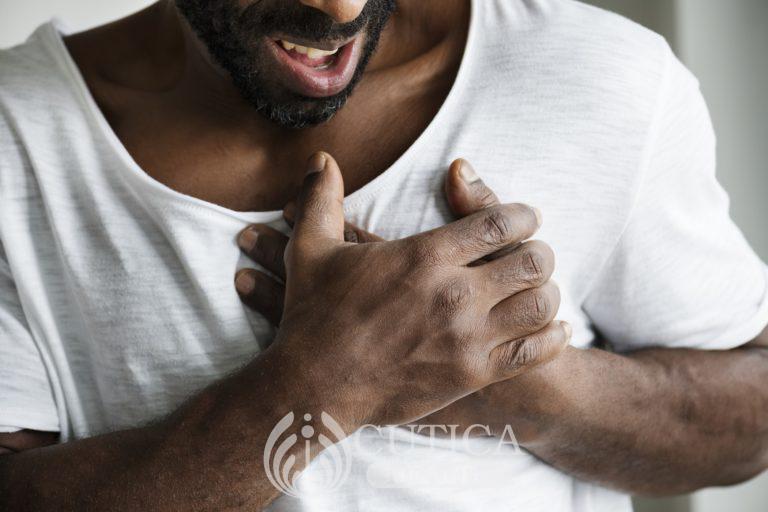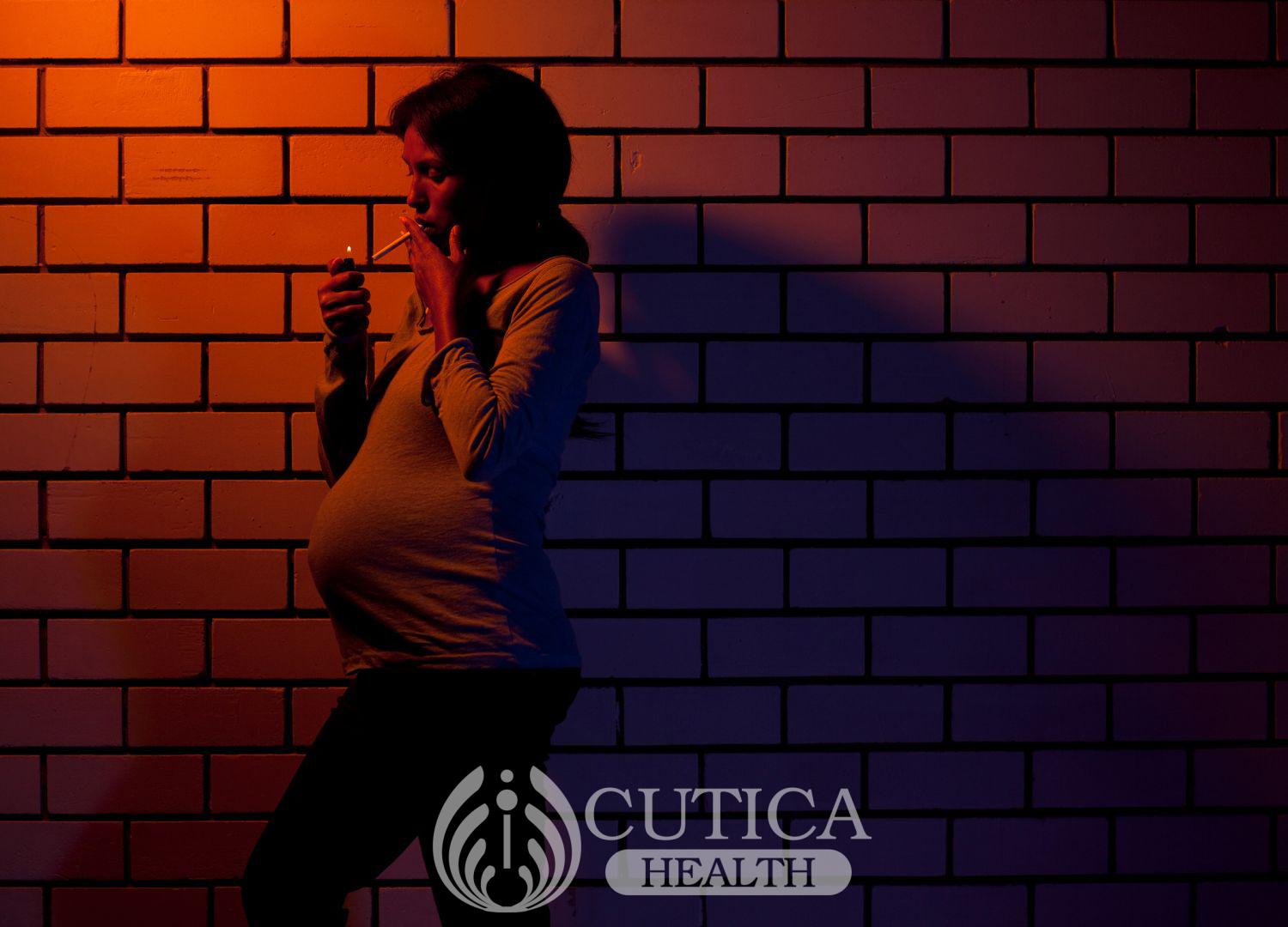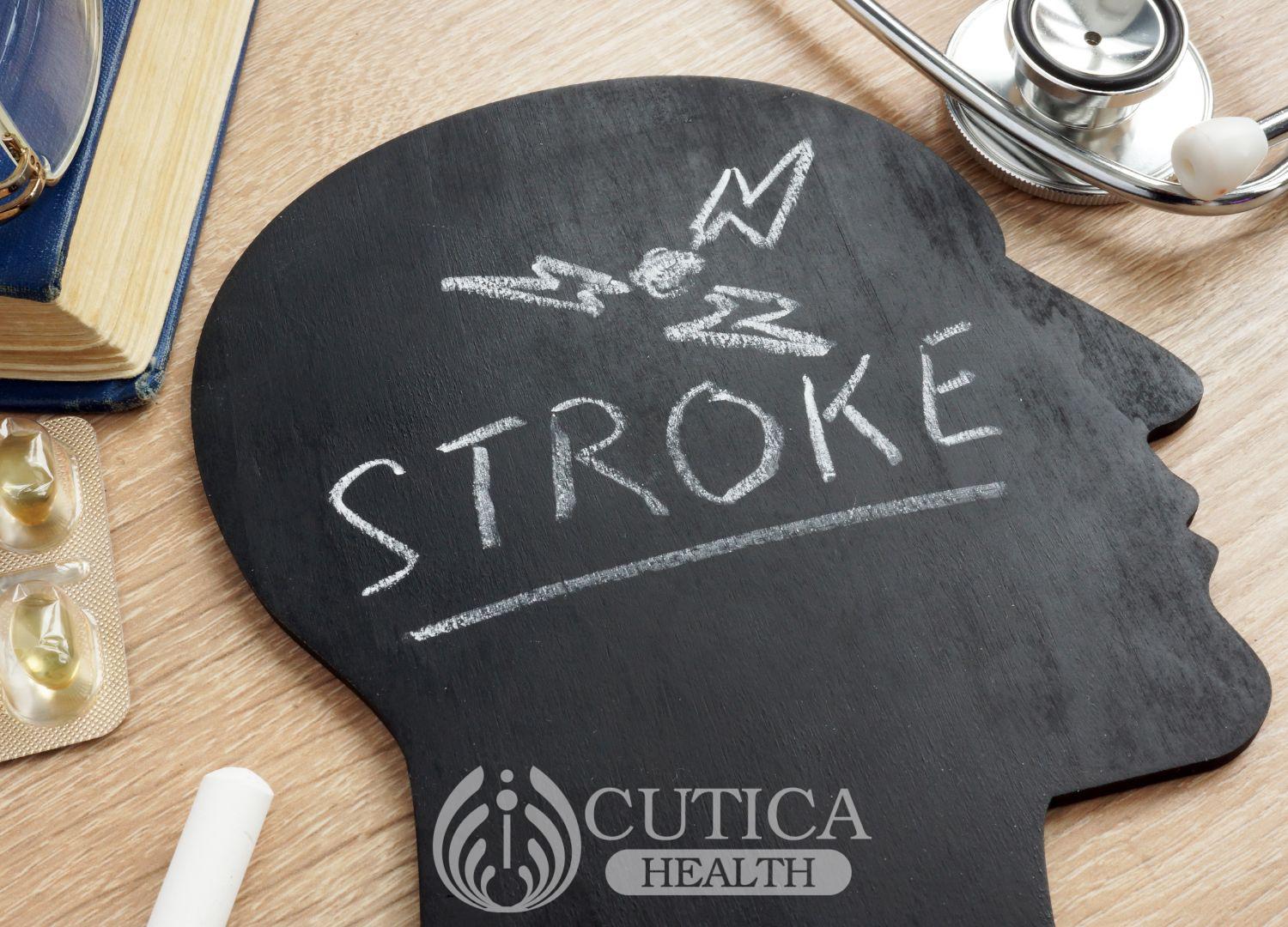
Summary
A heart attack happens when blood flow to the heart muscle cells is blocked or insufficient. Symptoms vary from chest, shoulder or jaw pain to dizziness, nausea and breathing difficulty. However, there may be no symptoms.
The commonest cause of a heart attack is blockage of blood flow through diseased coronary arteries (vessels that supply blood to the heart). When this happens the heart cells are injured and could die off, and if severe, cause the heart to stop beating.
Smoking, being overweight and conditions such as high blood pressure, poorly controlled diabetes, and abnormal cholesterol levels in blood puts a person at increased risk of having a heart attack.
A heart attack is an emergency condition, and must be treated promptly using drugs or surgery to improve the chances of survival.

Definition
The heart functions to pump blood around the body. Blood flows to the heart itself through blood vessels called coronary arteries. A heart attack occurs when there is insufficient blood flow to the heart muscle cells. The cells are starved of nutrients and oxygen and may become injured or permanently destroyed. A heart attack is also called myocardial infarction in medical terms.
A heart attack can manifest in various ways. It may occur without any warning (silent heart attack) or it may give warning symptoms which typically worsens during strenuous activity, and abates when the individual takes a break to rest. The warning symptoms may include any of the following:
- Chest pain, or tightness in the central/left part of the chest
- Pain in the shoulder or jaw
- Feeling the urge to vomit (nausea), or vomiting
- Difficulty in breathing
- Tiredness and dizziness
Persons experiencing activity-related chest pain, chest tightness, or jaw pain that is relieved by rest should suspect a heart attack, and seek medical attention as soon as possible.
Cause
A heart attack is caused by blockage of one or more coronary arteries, or by conditions that make the heart need more blood than it is getting.
Usually, there is an underlying disease (atherosclerosis) of the arteries that causes fat, cholesterol and some contents of blood to be deposited on the inner walls of arteries. These substances build up and harden over time to form what is called a plaque. A plaque can burst open or be eroded, and release its contents into the blood. This causes condensation of cells and other substances around it, forming a clot. If this occurs in a coronary artery and the clot is very large, it can result in an obstruction in blood flow to heart muscles and thus a heart attack.
Less commonly, the coronary artery may constrict involuntarily and become very narrow, a condition known as coronary artery spasm. If this happens, there is a shortage of blood supply to the heart muscles and a heart attack results. Coronary artery spasm has been linked to cocaine use, extreme emotional stress, pain or cold and cigarette smoking.
At other times, even though there is no blockage or constriction of the coronary arteries, a heart attack may occur in conditions that either reduce the supply of blood to the heart or increase its need for blood. This is referred to as demand ischemia.
Risk factors
There are some factors that increase a person’s chances of getting a heart attack. Some of these are beyond an individual’s control, but some others can be controlled.
Controllable factors include:
- Tobacco smoking either directly or by prolonged indirect exposure to tobacco fumes
- High blood cholesterol levels
- High blood pressure
- High blood sugar
- Leading an inactive or sedentary lifestyle
- Being overweight or obese
- Unhealthy diet
These factors increase the chances of heart attack by contributing to the formation of plaque on the coronary artery walls.
Uncontrollable factors include:
- Being a male
- Being a female that has reached menopause
- Being older than 55 years
- Having a relative who had a heart attack, especially if it occurred in someone younger than 55years
Classification
There are two main types of heart attack.
Type 1 heart attack happens when plaque breaks down, leading to blockage of the coronary arteries. This is the most common type, and it can be due to complete or incomplete blockage of the coronary artery.
Type 2 heart attack is a shortage of blood to the heart from any other cause other than that of type 1. Coronary artery spasm and demand ischemia fall under this category.
Treatment
The diagnosis of heart attack is made based on symptoms (as listed above) and tests. These tests include:
Blood tests: When heart cells are injured during a heart attack, they release a protein called troponin into the blood. High troponin levels could be an indicator of a heart attack. Creatine kinase and other enzymes may also be higher than normal in the blood of a person with a heart attack.
ECG (a test that shows the electrical activity of the heart): This may show some abnormalities or an unusual rhythm of the heartbeat. It may, however, appear normal depending on the type and severity of the heart attack.
Coronary angiography: This test is used to view the insides of the coronary arteries and shows the extent of blockages.
Some other medical tests (to identify problems in other organs of the body as a result of the heart attack) may need to be carried out as well.
While investigations are ongoing, initial treatment could include:
- Aspirin: This helps to prevent additional clots from forming.
- Nitroglycerin: This helps to improve blood flow by causing the arteries to widen. It also reduces the stress on the heart.
- Supplemental oxygen: to increase available oxygen in the blood.
Once the diagnosis is confirmed, the next step is to promptly restore blood flow to the heart otherwise the affected heart cells begin to die. This can make the heart stop beating altogether and can lead to death. Depending on the type and extent of the heart attack, specific treatment involves the use of drugs and/or surgical procedures. These are-
- Thrombolytics: These are drugs that dissolve clots. They must be given within a few minutes to a few hours after the heart attack to be effective.
- Coronary angioplasty: This is a procedure in which a tube is inserted into the coronary artery and the clot is compressed or sucked out. A flexible stent may also be put into the artery to maintain its patency.
- Coronary artery bypass graft surgery: This involves connecting another blood vessel to the blocked artery in such a way that blood is shunted past the obstruction to supply the heart cells.
Other medications such as blood pressure-lowering drugs, cholesterol-lowering drugs, and drugs that prevent clots from forming may be given to treat underlying conditions.
Conclusion
A heart attack is an emergency condition that can lead to death and disability if not treated promptly. Therefore a high level of suspicion and immediate action is required to improve the chances of survival. The risk of having a heart attack can be reduced to a large degree by leading an active, healthy lifestyle.
Article by CH writer Dr. Mercy Folayan, MBBS












